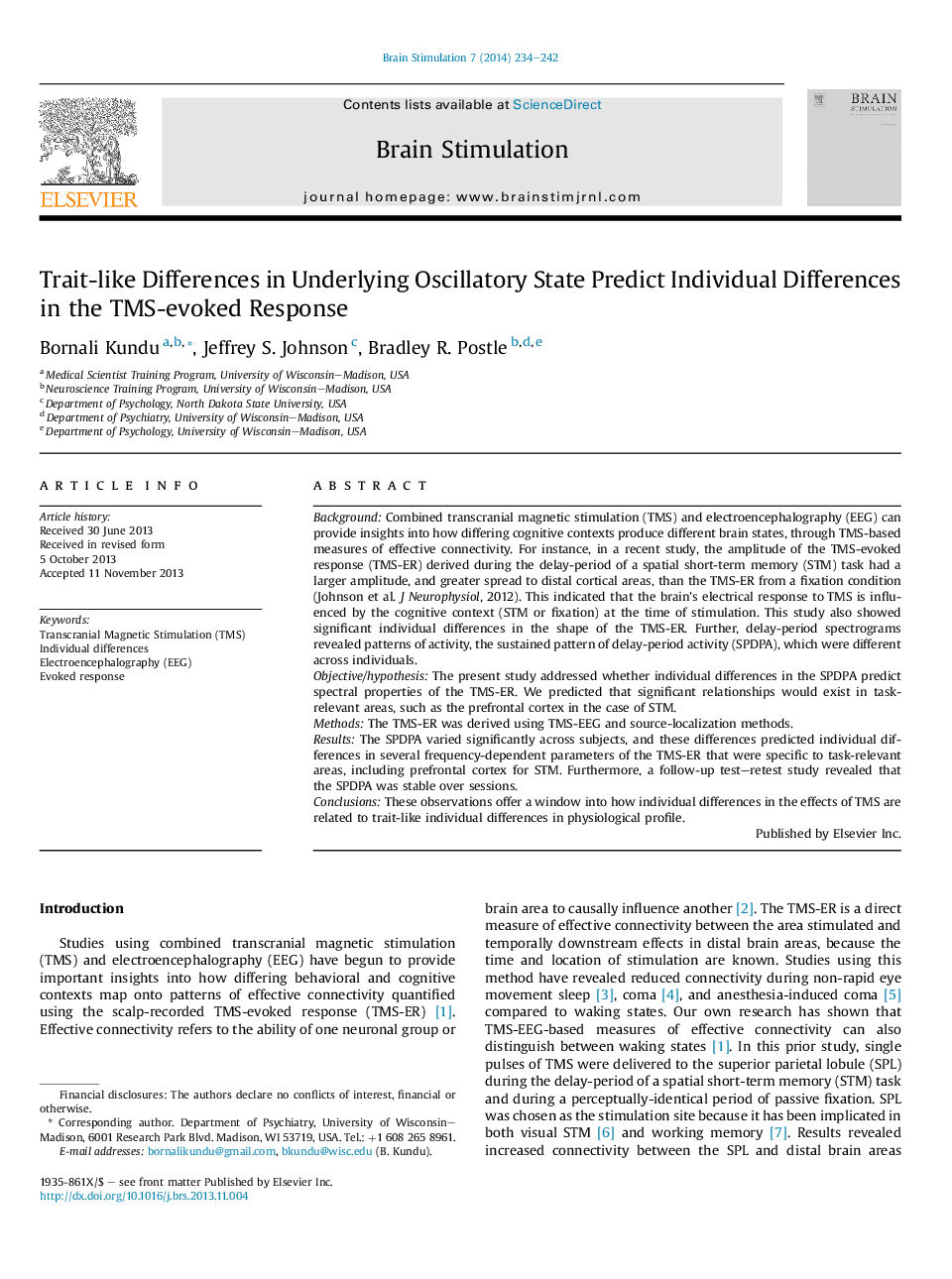| Article ID | Journal | Published Year | Pages | File Type |
|---|---|---|---|---|
| 6005843 | Brain Stimulation | 2014 | 9 Pages |
BackgroundCombined transcranial magnetic stimulation (TMS) and electroencephalography (EEG) can provide insights into how differing cognitive contexts produce different brain states, through TMS-based measures of effective connectivity. For instance, in a recent study, the amplitude of the TMS-evoked response (TMS-ER) derived during the delay-period of a spatial short-term memory (STM) task had a larger amplitude, and greater spread to distal cortical areas, than the TMS-ER from a fixation condition (Johnson et al. J Neurophysiol, 2012). This indicated that the brain's electrical response to TMS is influenced by the cognitive context (STM or fixation) at the time of stimulation. This study also showed significant individual differences in the shape of the TMS-ER. Further, delay-period spectrograms revealed patterns of activity, the sustained pattern of delay-period activity (SPDPA), which were different across individuals.Objective/hypothesisThe present study addressed whether individual differences in the SPDPA predict spectral properties of the TMS-ER. We predicted that significant relationships would exist in task-relevant areas, such as the prefrontal cortex in the case of STM.MethodsThe TMS-ER was derived using TMS-EEG and source-localization methods.ResultsThe SPDPA varied significantly across subjects, and these differences predicted individual differences in several frequency-dependent parameters of the TMS-ER that were specific to task-relevant areas, including prefrontal cortex for STM. Furthermore, a follow-up test-retest study revealed that the SPDPA was stable over sessions.ConclusionsThese observations offer a window into how individual differences in the effects of TMS are related to trait-like individual differences in physiological profile.
